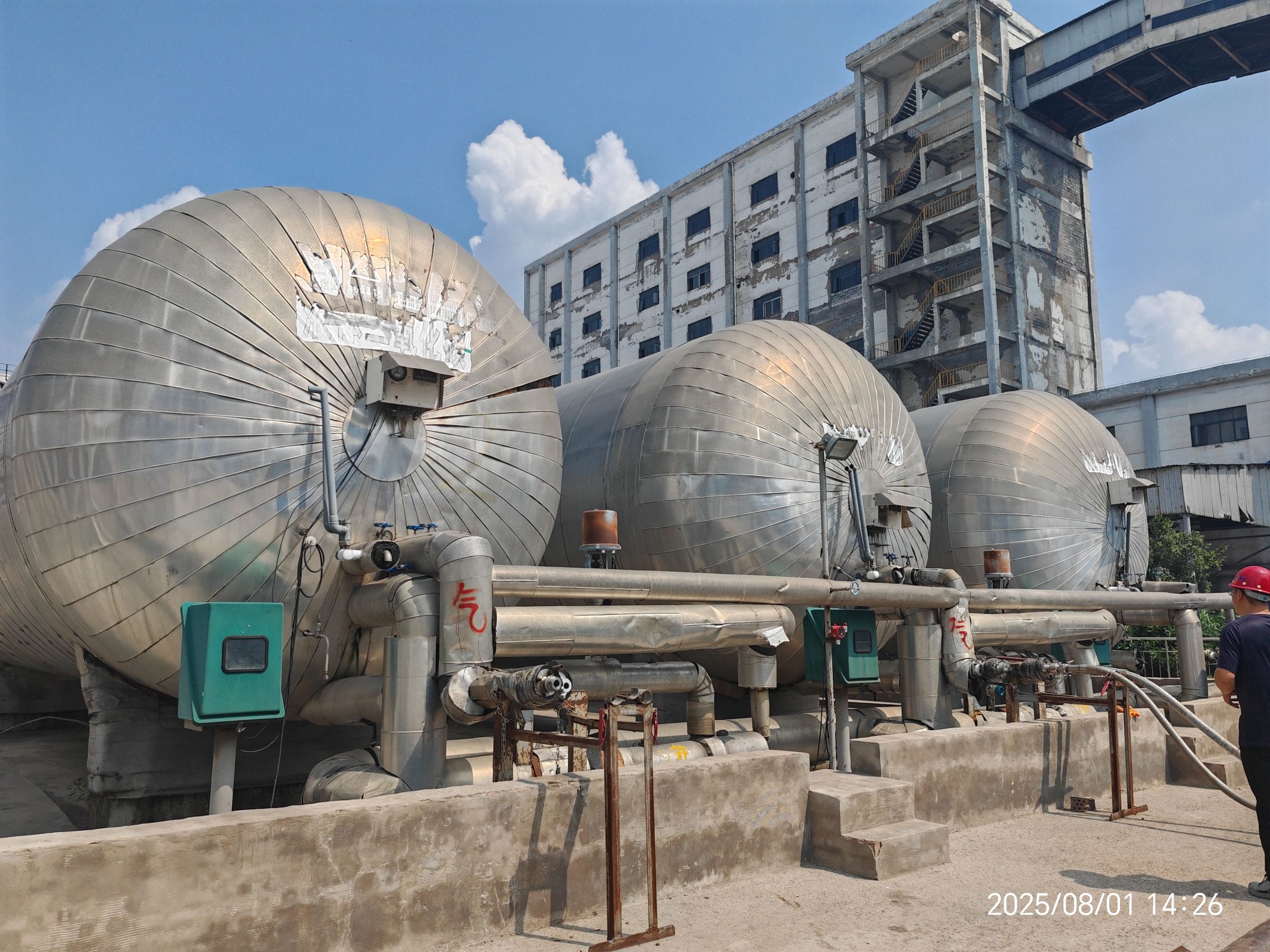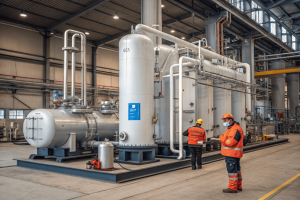How does a gas separation membrane work?
•
How does a gas separation membrane work?
Struggling with complex and bulky gas separation equipment? Traditional methods can be a headache, consuming too much energy and space. You need a simpler, more efficient solution.
A gas separation membrane works like a highly selective filter for gases. It uses a special polymer material that allows certain gas molecules to pass through much faster than others. This difference in permeation speed is what separates the gas mixture.
It sounds straightforward, but the real magic is in the material science and process design. As an engineer, I've integrated these membrane systems into various projects, and their elegance is impressive. They replace complex moving parts and chemical processes with a simple, robust technology. Let's explore how this actually happens.
What causes membrane separation?
You see the gas going in and a separated stream coming out, but what’s the actual force driving this process? Understanding the core principle can make you feel more confident in the technology.
The primary driving force for membrane separation is the pressure difference across the membrane. A high-pressure feed gas pushes molecules against the membrane, and the specific permeability of the material allows certain "fast" gases to pass through to the low-pressure side more easily.

I always think of it like a crowd of people trying to get through a series of special gates. The pressure is the push from the crowd behind them. The gates (the membrane material) are designed to open more easily for some people (fast gases) than for others (slow gases).
Permeability and Selectivity
The two most important properties of a membrane are permeability and selectivity. Permeability is how fast a specific gas can pass through the material. Selectivity is the ratio of permeability between two different gases. For CO2 recovery, we need a membrane that is highly permeable to CO2 but much less permeable to other gases like nitrogen or methane. The pressure difference, or "partial pressure," of each gas provides the driving force. In one project, we had to fine-tune the feed pressure to get the perfect balance. Too little pressure, and the separation was too slow. Too much, and we risked damaging the membrane fibers. It’s all about finding that sweet spot for maximum efficiency.
| Gas Molecule | Permeability | Typical Behavior |
|---|---|---|
| H₂O (Vapor) | Very High | Passes through quickly |
| CO₂, He, H₂ | High | "Fast" gases, permeate easily |
| O₂ | Medium | Permeates moderately |
| N₂, CH₄ | Low | "Slow" gases, mostly retained |
What is membrane separation used for?
Wondering if this technology is just a niche solution? You need to know if it has proven applications in real-world industrial settings, especially ones similar to your own.
Membrane separation is used across many industries. Key applications include nitrogen generation from air, hydrogen purification, natural gas sweetening (removing CO2), and CO2 recovery from biogas or industrial off-gas streams in breweries and chemical plants.

The versatility of membrane technology is one of its greatest strengths. I've seen it applied in so many different contexts. The fundamental principle is the same, but the system is tailored to the specific separation task. This flexibility makes it a powerful tool for process engineers.
From Brewing to Biogas
In my work at FTL Machine, we often use membrane technology for CO2 recovery in the food and beverage industry. For example, a brewery can capture the CO2 from its fermentation tanks. This gas stream is very pure but contains some water vapor and trace organic compounds. A membrane system is perfect for this. It allows the CO2 to pass through while holding back the impurities, resulting in food-grade CO2 ready for reuse in carbonation. I also worked on a biogas upgrading project. The goal was to remove CO2 from raw biogas to produce pipeline-quality biomethane. The membrane selectively removed the CO2, increasing the methane concentration from 60% to over 97%. In both cases, the technology provided a simple, low-maintenance solution that turned a waste stream into a valuable product.
What are the disadvantages of membrane separation?
No technology is perfect, and you are right to be skeptical. Understanding the limitations is just as important as knowing the benefits before you make a major investment decision.
The main disadvantages are sensitivity to certain contaminants, which can cause fouling and reduce performance. They also may not achieve the ultra-high purity levels of other methods like cryogenic distillation, and there's often a trade-off between recovery rate and product purity.

As an engineer, I spend a lot of time planning for these potential issues. Being aware of the drawbacks allows us to design a more robust and reliable system. Proper pre-treatment of the feed gas is absolutely critical for long membrane life.
Managing the Trade-offs
One of the biggest challenges in designing a membrane system is managing the trade-off between purity and recovery. If you try to get a very high-purity product, you often lose more of that product to the waste stream, lowering your recovery rate. It's a balancing act. For instance, to get 99.9% pure CO2, you might have to accept a lower overall recovery percentage. Another key issue is "plasticization." In high-concentration CO2 streams, the gas can actually cause the polymer membrane to swell, which can negatively impact its selectivity over time. We address this by selecting the right advanced membrane materials designed for these conditions and by controlling operating temperatures and pressures. Proper system design is all about mitigating these known limitations.
Conclusion
Gas separation membranes offer a simple and effective method for many applications. Understanding their principles and limitations is the key to successfully using this powerful technology in your operations.
You may also be interested in:

Why is CO₂ recovery technology gaining popularity worldwide?
Why is CO₂ recovery technology gaining popularity worldwide? You see headlines about carbon capture everywhere. But you wonder if it's
Read more
How is a CO₂ recovery system designed to fit different industries?
How is a CO₂ recovery system designed to fit different industries? You're under pressure to implement a CO₂ recovery solution.
Read more
How energy-efficient are today’s CO₂ recovery technologies?
How energy-efficient are today’s CO₂ recovery technologies? You want to recover CO₂, but you fear that high electricity bills will
Read more